Traditions and art in Cappadocia
(Another blog post from Turkey...just a little late...) Rugs, pottery and the intricate and nuanced dance of courtship in central Turkey
Pâque Vacances (spring break) continued…
Turkey is a place of sensory engagement: the tastes (Sam’s food blog coming soon), the smells— the food, the apricot and almond blossoms, the sights, the sounds: a language completely foreign to our ears, and calls to prayer five times a day— six while we were visiting, because of an additional call regarding Ramadan, and touch: the rugs, the red clay, the rough surfaces of the volcanic rock. A full immersion, if you pay attention.
(The view across from our cave apartment)
One of my favorite memories is sitting outside of our cave apartment after the sun went down, the caves across from us illuminated for the benefit of viewing, and listening to the call to prayer, a slightly tinny sound from loudspeakers on the single small mosque in our very small town, floating through the night air. The single voice, a sung chant of unfamiliar intervals and melodies, seemed to curl around the rock. The singing, the prayer we did not know, but only knew was present, all a mystery of sound and expression that united a particular people no matter how observant they were or were not.
In the context of Turkey’s extraordinarily violent and textured history, and against the backdrop of the population exchange a century ago, the sounds in that night desert air take on heavier weight to a Western listener’s ears, tragedy alongside the specific discipline of a faith— but I know that this is weight and texture I am imposing from my experience. Despite the history, I have a high regard for the aspects of a faith tradition that connect people again and again, throughout the day, to what is mystery in life. Though politics can often co-opt religion (as it has done in every country to varying degrees), it is a good reminder it is not the faith, but the people and politics— that are the problem.
During the day, while driving between locations in Cappadocia, Umit explained the nuanced and complicated set of traditions relating to courtship and marriage, all of them laden with subtlety and extreme import. His grandparents were married by family arrangement when his grandfather was 17 and his grandmother was 15. His grandfather did not see his grandmother until the end of the marriage ceremony, when her veil was lifted.
Central Turkey is a much more traditional area than Istanbul, though all kinds of dress can be observed in both places. Many fewer women are present in public, and those that are mostly wear long dresses and cover their hair with a headscarf. We usually saw then hurrying along the side of the road with children. Umit explained that if a man is tempted by a woman, it is a sin, and only 30% of that sin is the man’s; 70% of the sin is the woman’s. (Given the conservative culture, I was glad for bringing loose linen pants and linen shirts, and would even next time bring a loose caftan or two for longer sleeves.)
(This woman was weaving at the rug shop. Weaving is a dying art as the younger women don’t want to stay in the village to weave, but leave for the big cities of Istanbul and Ankara.)
If two people are interested in being married—whether their interest is between the two or arranged by their parents—to express disinterest is unacceptable, but a series of indicators helps a prospective groom.
In earlier times, if a young woman was available to be married in a household, a pot was put on the roof. The shape of the pot indicated the shape of the woman; if she was tall and thin, the pot was tall and thin (thinness was not a good thing; it indicated she may not be strong enough to work in the fields). A short and round pot meant that the girl was plump and healthy. We did not see many pots on roofs, and expect this tradition is now out of date. Once a suitor had arranged to marry her, he would shoot the pot off the roof.
But still today in the country, women are expected to know how to weave to help support their families, and a potential groom’s parents may ask what her talent is. The young woman will have woven a dowry rug. If that rug is displayed incomplete on the wall, it means she is not ready to be married. Nearly complete but unknotted is a cue she is available and ready. And if the carpet has knotted ends, she is not available and likely committed to someone already.
(Samuel at the rug shop on Turkish rugs with mostly reappropriated Hittite designs. The rug dealers were proud to say that they believed Turkey was the originator of weaving rugs based on the Pazryk Carpet discovered in Siberia in the ice with Hittite designs and dating to the 5th c BC. The story the proprietor told was an interesting example of the national pride of story art and craft we see in every culture that forms a foundation for a people.
A man is expected to know how to make pottery, and the potential bride’s parents will ask for evidence of his ability. He typically will have produced—and will show—a sugar bowl. If the lid fits well on the sugar bowl, it indicates he has mastered his craft and is ready to be married.
(Jude at the pottery kick wheel. Both boys had the chance to get their hands dirty, even briefly, with the red clay used in more traditional vessels. White clay is used for ceramic work.)
The young woman will also be asked to prove that she can cook, and she will make what we call dolmades—grape leaves wrapped around rice. Unlike the dolmades we are more accustomed to, closer to the Greek, she will prepare (if she is to be deemed successful), very thin dolmades, shaped like a small cigar.
When two families have determined that the young man and women are available, the bride’s family invites the groom’s family over for a Turkish coffee. Coffee and tea are important traditions of hospitality, but coffee carries significantly more import. To share a coffee with someone is to connect a friendship that will last 40 years; in the case of two families whose children may wed, this lasts through the rest of the parents’ lives.
The young woman makes and serves the Turkish coffee. If she serves coffee to the young man that is salty, this indicates she does not care for him at all. She cannot directly refuse him, but this is the indicator that they will not be a good match. If the coffee is a bit salty, it signals that she is a bit of a tough girl, perhaps difficult to please; he will need to do his work. If she serves sweet coffee, she is indicating that she loves him (things are looking good!). Traditionally this coffee is prepared in a wood oven, as are a number of their more wonderful dishes, baked over many hours.
(Turkish coffee. A small coffee, like an espresso, but the grounds are in the bottom of the cup. Similar to Bosnian coffee, probably because Bosnia was once occupied by the Ottomans).
Umit shared that this whole process was extraordinarily stressful. Imagine again being that young person desperately in love—or even desperately aware of what this next step will mean. They would be much younger people than we were when married, at a time of life when everything feels as though it holds the full weight of a life of meaning, before you have a chance to begin to develop the parts of a life that add to its texture and its depth.
Two days before the marriage, the groom visits the jewelry store with his mother-in-law to be—and purchases whatever she chooses for her daughter. It is considered a matter of family honor to buy whatever she requests, no matter the cost. (This is where I lost my smile, Umit said, smiling.)
Then the woman goes to a Turkish bath, with several pools and treatments, and then she is massaged naked by another woman who examines her body for disease. She must be proclaimed physically fit to marry, to carry the children that will build their family into the next generation. (It’s not clear that men undergo any similar examination).
Finally, if this all happens in a small town, the wedding is announced over the same loudspeakers on the mosque which deliver the call to prayer. In our guide’s hometown, this announcement drew 1,200 people to his wedding, and it is his responsibility to pay for most of the wedding: the meals, the music, the dancing, and more. Umit said it took him five years of work after his wedding to pay his bills!
The conservative nature of the culture is also reflected in religious services and the design of the buildings: women must enter before the service, go upstairs to the balcony over which a curtain is pulled, and leave at the end of the service only after men have left.
(The 12th century mosque in the town where we were staying. Umit took us inside to explain how it is set up. The two gold columns indicate the direction of Mecca.)
One other couple we met while traveling: a pair of young doctors from Australia, originally from India. They are traveling for a year around the world, and were heading to Gallipoli from Cappadocia in time for ANZAC Day. That is one more place I wish we might have found a way to see while we were here, and yet another reason to return. I’m completing this post on ANZAC Day, after we watched Gallipoli with the boys, the film by Peter Weir. It’s an excellent film, and utterly tragic, covering the battle of Lone Pine where waves of Australians and New Zealanders were utterly massacred. 250,000 people died in each side of the battle over the course of the year in 1915 (over 500k in total), in what had been an attempt to capture Constantinople (now Istanbul) by the Allies through the Dardanelles Straits. It was ultimately considered a victory for Turkey— one of the last victories of the Ottoman Empire— and a devastating loss for the allies.
A history that still weighs heavy for the Commonwealth, and is reflected in much that has been written and inferred in the many years since in both literature and politics.
Travel tips for Cappadocia:
Either airport in Cappdocia is easy to get in and out of— but pay attention, because they aren’t located close to each other.
Be prepared to pay cash, and use Euros as well as Turkish Lira. Oftentimes credit cards are accepted but may not work.
Dress conservatively—long pants and loose fitting clothing is best.
Hire an excellent guide; it made all the difference for us and made this leg of the trip particularly amazing, with visits to hidden places where we never saw a tourist bus. It also helped us appreciate the layers of understanding that are possible. Happy to recommend if you’re looking.
Have a sense before you go of what you might want to bring home or not. The sales people are excellent and you’ll be brought to visit local rug, ceramic and jewelry shops (we did choose to purchase from two shops).
The first price is never final (nor is the second or third). Take your time.
Women should have a scarf they can use to cover their head for mosques.
Sturdy shoes are very helpful— there is a lot of clambering around!
Bring a jacket for going underground where the temperatures are cool.
References for the past two posts:
History of Cappadocia as provided by the amateur historian Michael we met on our travels.
Our guide, Umit
Wikipedia and other sources: https://en.wikipedia.org/wiki/Convention_Concerning_the_Exchange_of_Greek_and_Turkish_Populations
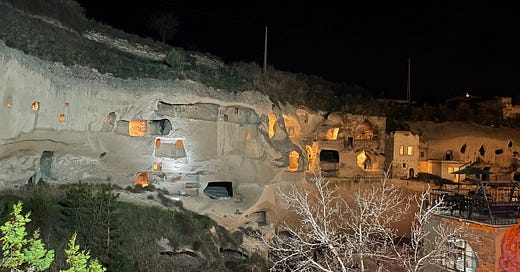



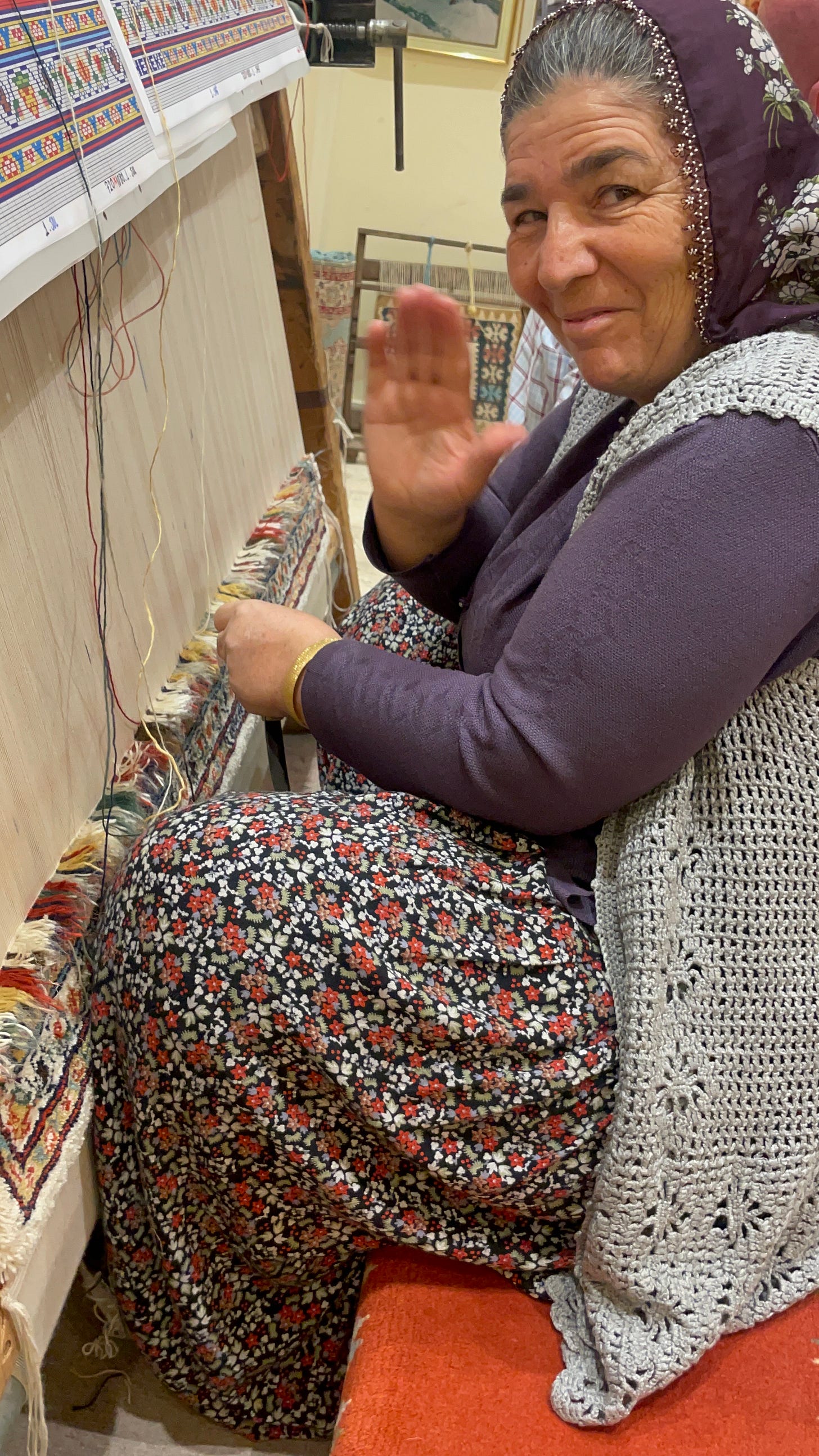
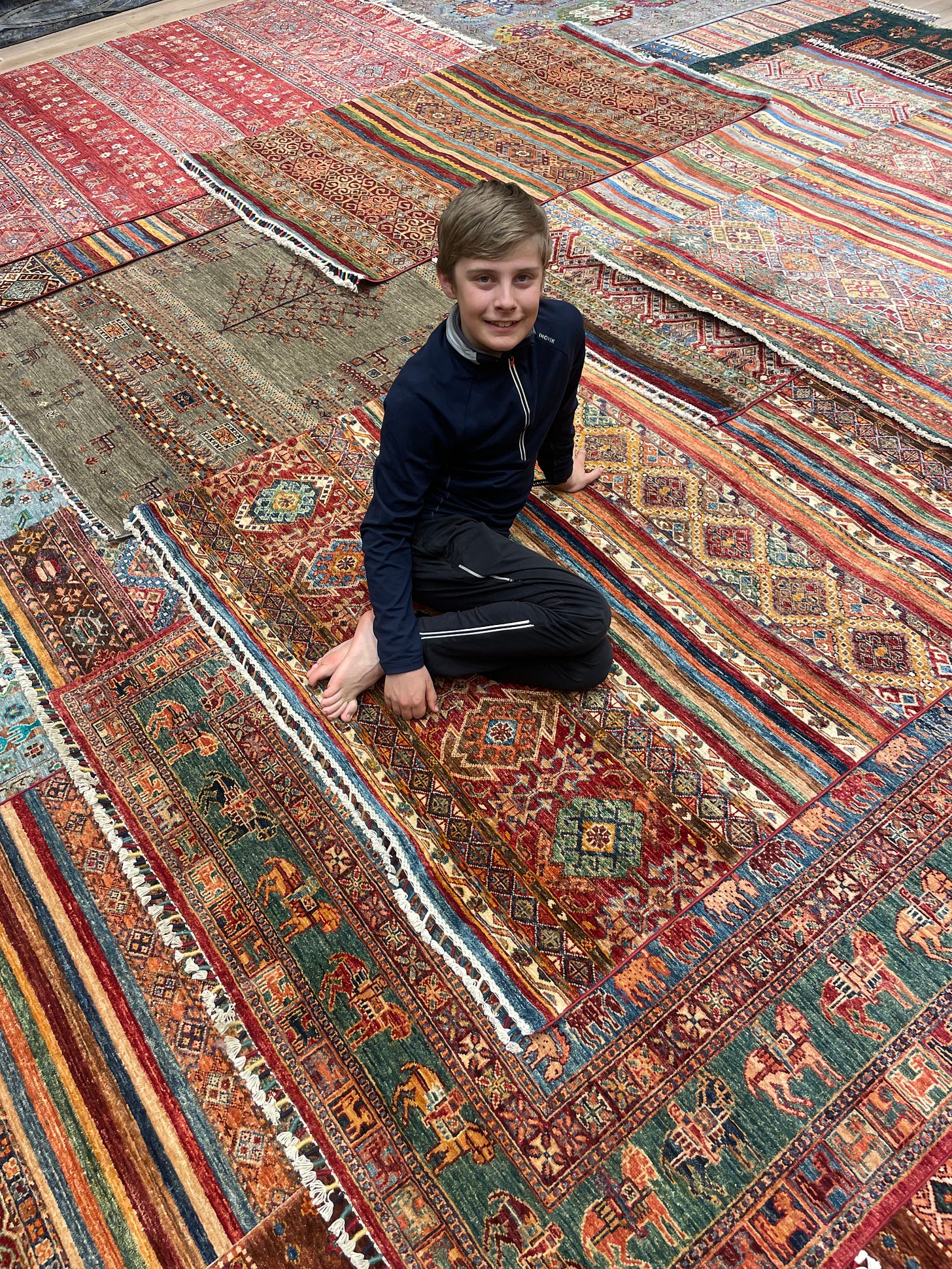
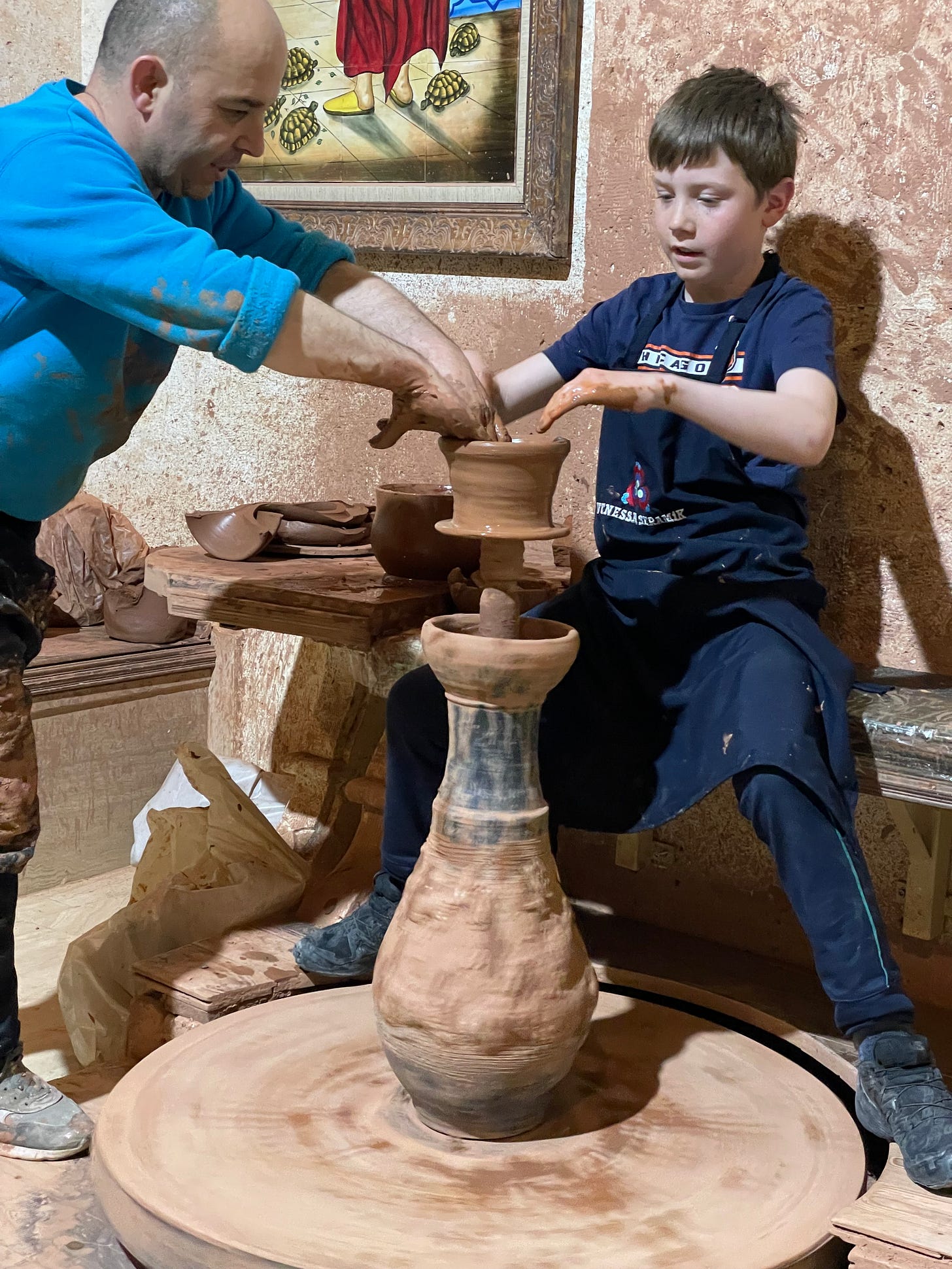
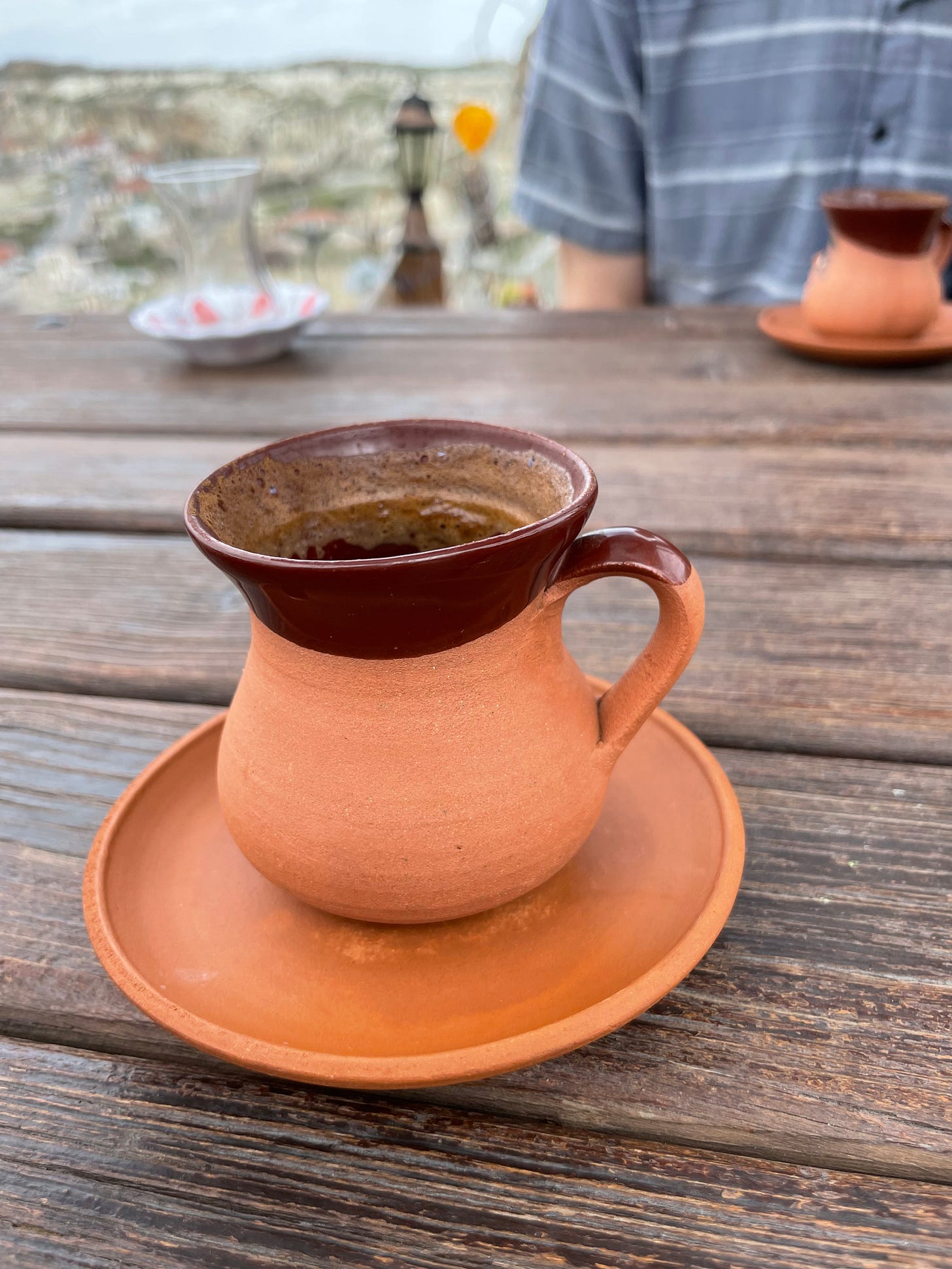
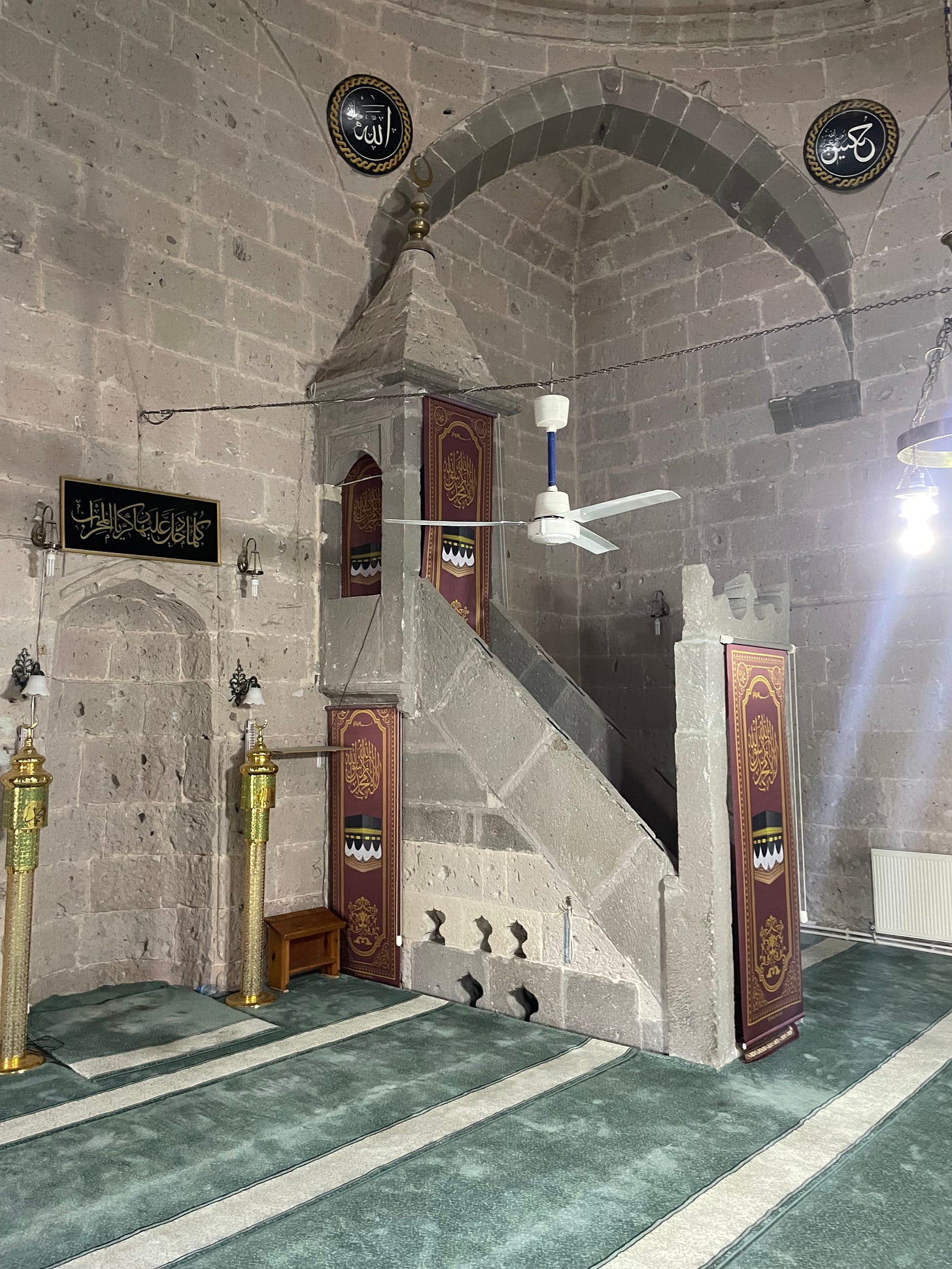
What an interesting article about a fascinating place and culture!